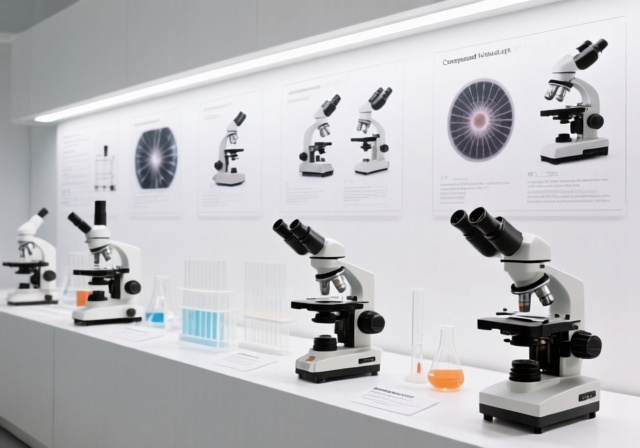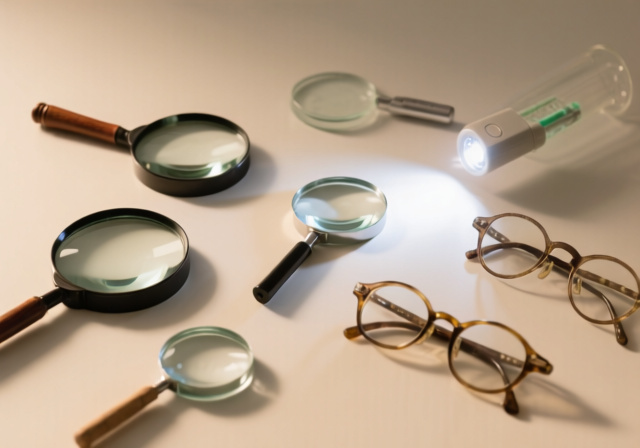



Microscopes have revolutionized our understanding of the world, revealing invisible realms that exist beyond our natural vision. These remarkable instruments have transformed science, medicine, and education, allowing us to peer into the intricate details of life itself.
A microscope is an optical instrument that uses lenses to magnify and view objects too small to be seen by the naked eye, revealing details invisible without magnification. The word comes from Greek roots: “micros” (small) and “skopein” (to look at).
Modern microscopes can magnify objects from 10 times to over 10 million times their actual size, opening up entire universes of discovery.
These instruments work by using glass lenses to bend light rays, creating enlarged images of tiny specimens that would otherwise remain hidden from human perception.
The microscope’s journey from simple magnifying glass to sophisticated scientific tool spans over 400 years of innovation and discovery. Here’s how it unfolded:
Each advancement built upon previous discoveries, pushing the boundaries of what we could observe and understand at microscopic scales.
Understanding how microscopes function reveals the elegant physics behind these powerful tools. Different types employ various methods to achieve magnification.
Light Microscopes use glass lenses to focus visible light through specimens. Compound microscopes combine two lens systems: the objective lens (closest to the specimen) and the eyepiece lens (closest to your eye). Total magnification equals the objective power multiplied by the eyepiece power.
Resolution determines the smallest distance between two points that can still be distinguished as separate. Light microscopes are limited by the wavelength of visible light, making it impossible to resolve objects smaller than about 200 nanometers.
Electron Microscopes bypass this limitation by using electron beams with much shorter wavelengths than light. This allows them to achieve magnifications up to 10 million times, revealing structures at the atomic level.
The key principle across all microscope types is manipulating waves (light or electrons) to create enlarged images that our eyes can perceive and interpret.
Different applications require different microscope designs. Each type serves specific purposes across various fields of science and industry.
| Microscope Type | Magnification Range | Best For | Key Features |
|---|---|---|---|
| Compound Light | 40x – 1000x | Biological samples, cells | Multiple lenses, affordable |
| Stereo | 7x – 50x | 3D objects, dissection | Two eyepieces, 3D view |
| Digital | 20x – 200x | Classroom teaching, documentation | Camera integration, screen display |
| Electron (TEM) | 1,000x – 10,000,000x | Virus structure, cell ultrastructure | Electron beam, ultra-high magnification |
| Scanning Electron | 20x – 1,000,000x | Surface details, 3D imaging | 3D surface rendering, detailed imaging |
| Fluorescence | 400x – 1000x | Labelled structures, live cells | Fluorescent tagging, specific imaging |
Understanding these differences helps researchers and educators choose the right tool for their specific needs. For those exploring the differences between simple and compound microscopes, the choice often depends on whether you need to view surfaces or see through transparent specimens.
Today’s microscopes serve countless applications across science, medicine, industry, and education. Here are ten remarkable ways they’re being used:
These applications demonstrate how microscopes continue to drive innovation across virtually every field of human endeavor.
Whether you’re a student or professional, following these guidelines ensures optimal results and equipment longevity:
For educators and parents choosing microscopes for educational purposes, these rules form the foundation of proper microscope handling and student safety.
From the simple magnifying glasses of the 16th century to today’s atomic-resolution instruments, microscopes continue to transform our understanding of life and matter. Each technological breakthrough opens new frontiers of discovery.
The future promises even more exciting developments. Super-resolution microscopy techniques, developed in 2025, earned Nobel Prizes for overcoming the diffraction limit of light microscopes. Artificial intelligence is now being integrated with microscopy systems for automated analysis and discovery.
As microscopy technology advances, it becomes more accessible to everyone. Digital microscopes now connect directly to computers and smartphones, while citizen science projects enable ordinary people to contribute to real research.
The microscope remains one of humanity’s most powerful tools for exploring the unknown, reminding us that incredible worlds exist just beyond the limits of our perception.







